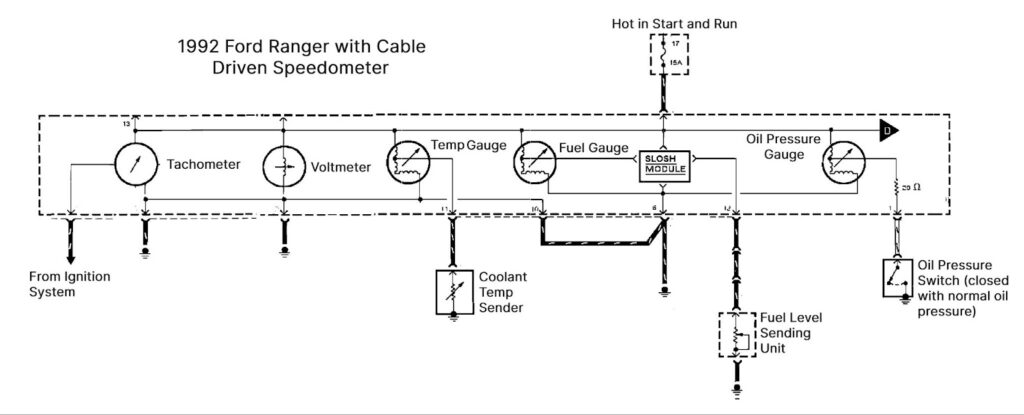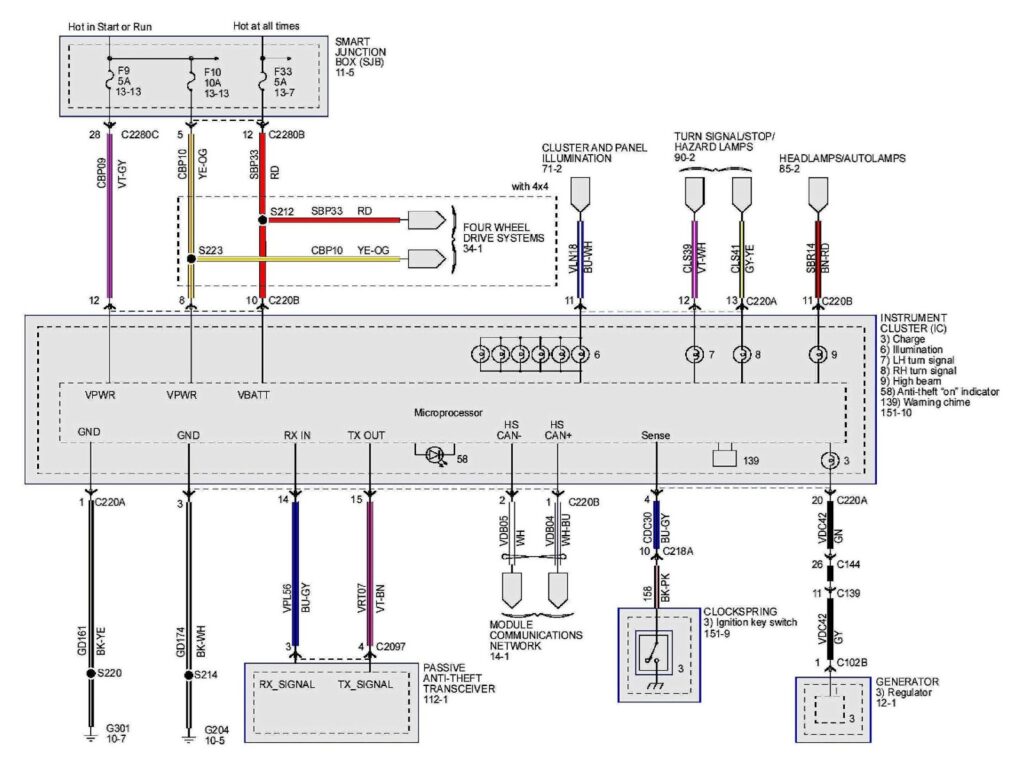The gauges on your dashboard display crucial information that makes driving safe and hassle-free. However, they won’t work if the instrument cluster fuse develops problems. This fuse is responsible for controlling the dashboard gauge and beyond, also powering warning lights and alarms.
Which Fuse Controls the Dashboard Gauge?
The instrument cluster fuse manages the dashboard gauge of a vehicle. It uses electricity from the car battery to power various electronic components of the dashboard such as the different warning lights, gauges, and alarm systems. They include but are not limited to the following:
- Speedometer
- Tachometer
- Fuel Gauge
- Temperature Gauge
- Turn Signal Indicators
- Windscreen Wipers
- Warning Alarms


If the instrument cluster fuse or any of the fuses feeding the instrument cluster fails, the dashboard gauges can’t display critical information, like fuel levels, speed, and engine RPM.
Signs You Need to Replace Your Instrument Cluster Fuse
When your instrument cluster fuse blows, gets displaced, or takes any damage, the different displays on your vehicle’s dashboard could malfunction. Here are some of the symptoms it might be time to replace the fuse.
Dashboard Gauges Stop Working or Go Haywire
If the various gauges on the dashboard such as the fuel gauge, the speedometer, or the tachometer go haywire, there might be something wrong with your instrument cluster fuse. The fuse might be failing to deliver enough electricity to power them.
Electrical Components Don’t Work Properly
Besides dashboard gauges, the fuse also powers electric parts like turn signal indicators, windscreen wipers, and audible warning signals. So these components could malfunction or stop working if the fuse is faulty.
Some of these parts are essential for safety, like the windscreen wipers. Without a functioning fuse, the wipers can’t clear water and other debris from the windscreen. This could hamper your vision and increase the risk of accidents.
Warning Lights Malfunction
As mentioned in the previous section, if the instrument cluster fuse is blown or missing, dashboard warning lights might stay lit or stop working altogether.
Keep in mind that the dashboard lights could malfunction due to reasons other than a bad instrument cluster fuse, like faulty sensors. One foolproof way to determine whether a faulty fuse is the culprit is to check all the dashboard displays. If all are malfunctioning, then replacing the fuse might be the solution.

What Can Ruin Instrument Cluster Fuses?
Instrument cluster fuses seldom fail on their own. While they do break down over time due to age and overuse, other factors can make them blow out sooner rather than later:
- Corrosive contaminants that break down the fuse.
- Electrical overloads that blow out the fuse.
- Poor wiring that overloads the fuse.
- Short circuiting that overloads the fuse.
- Wear and tear from age and overuse.
Where Is the Instrument Cluster Fuse Located?
The location of the instrument cluster fuse varies from vehicle to vehicle, but it’s usually inside the fuse box. The best way to guarantee you’ll find what you’re looking for is to consult your vehicle’s manual.
If your vehicle’s instrument cluster fuse isn’t in the box, then it might be worth checking the fuse box underneath the hood. The best way to guarantee you’ll find what you’re looking for is to consult your vehicle’s manual.
The best way to guarantee you’ll find what you’re looking for is to consult your vehicle’s manual.
– Richard McCuistian, ASE Certified Master Automobile Technician
How to Replace Your Instrument Cluster Fuse
Though it’s generally inadvisable to tinker with your vehicle’s fuse box unless it’s absolutely necessary, there are times when you’ll need to replace damaged fuses. If you’re keen on learning how to replace your instrument cluster fuse, these steps would give you an idea of what the process entails.
- Park your vehicle on a flat and even surface someplace secure.
- Disable the car battery and exit your vehicle.
- Find the fuse box containing the instrument cluster fuse, remove the cover, and search for the correct fuse.
- Use a pair of pliers to remove the instrument cluster fuse from the fuse box.
- Carefully inspect the instrument cluster fuse for black spots, damage, and gaps between the metal. Discard the cluster fuse if you spot signs of damage and replace it immediately. If you can’t see anything wrong with the fuse, it’s probably okay.
- Insert and secure the replacement fuse into the slot but make sure to use name brand fuses. Make sure the new fuse matches the amperage of the old one.
- Return the cover of the fuse box and seal it shut.
- Watch the cluster while starting the engine to see if your dashboard is working properly.
Keep in mind that the steps could vary depending on your fuse box’s location and configuration.
Any information provided on this Website is for informational purposes only and is not intended to replace consultation with a professional mechanic. The accuracy and timeliness of the information may change from the time of publication.


































